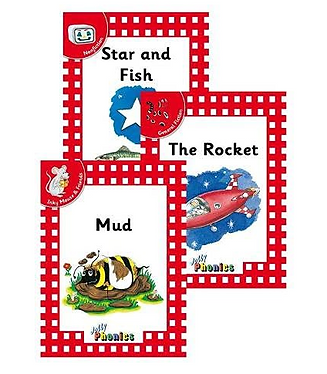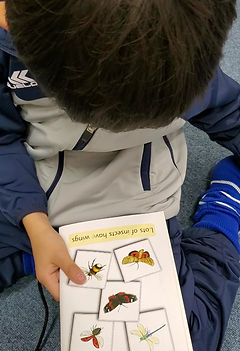Phonics Courses
What is phonics?
When you see the letters, ABC you say their names. However when you are actually reading English you can't say each letters' name to read a word. When reading English words we combine the different sounds that each letter makes.

D + O + G
[d] [o] [g]
DOG!
Dog
This is called phonics. By learning phonics, even children who see a word for the first time will be able to read it. Being able to read any word by yourself, will help you can gain confidence and enjoy learning English.

??
DOG
[D] [O] [Gee]
??
??
??
??
Age
6-11 years old
People
6 people
Lesson
1 course 12 lessons
(1 lesson / week)
Homework
Half an hour
Period
60 minutes
Price
Members 29,700 yen
Non-members 33,000 yen/course
Resources
Jolly Phonics
Learning video
Prep Work
none
Online
Available
Why learn Phonics?
Phonics is the system of teaching all the different sounds of each English letter, and then teaching children how to merge separate sounds together to make it one word (for example, blending the sounds d, o, g makes DOG). This type of phonics teaching is often referred to as “synthetic phonics”. Scientific studies have repeatedly found that Phonics is the most effective way to teach children how to read. Without it, some children will end up having serious reading difficulties. Phonics teaching is not limited to those learning English. It is widely used in English-speaking countries to help native speakers acquire reading skills more quickly. However, it is especially useful when teaching English learners because it gives students a learning mechanism that can help them compensate for the exposure gap compared to native learners. English has a complicated spelling system. It is important to teach letter sound mappings in a systematic way, beginning with simple letter sound rules and then moving onto more complex associations.

Frequency & Progression
To quickly build fluency in reading we have split Phonics into two distinct courses. In Phonics 1 students learn and practice who to write and say the sounds of the English Alphabet. In Phonics 2 they start to combine all the different sounds into more complete words as well as learn some of the combination sounds.
Will my child's reading really improve?
Phonics instruction teaches children how to decode letters into their respective sounds, a skill that is essential for them to read unfamiliar words by themselves. Most written words are unfamiliar to early readers, even if they can understand the word when it is spoken. Having letter-sound knowledge will allow children to make the link between the unfamiliar print words to their spoken knowledge. This transition from slowly sounding out a word, to rapidly recognizing it, is what we call “learning to read by sight”. Every reader must make this transition to read fluently.

Reading Materials and Expectations
Jolly Phonics Readers Level 1 Complete Set is the first of four levels of decodable books, providing the best start for children just starting to read. At every stage the words are within the reach of children as they use their letter sound knowledge and tricky words already taught.

Please remember that, while students are likely to pick up quite a bit of vocabulary over the course of phonics class both through classroom immersion and self-study, Phonics is NOT a vocabuly cram course. We are not teaching or testing how well students can remember the meaning of specific words. In fact, it is much more important that students get comfortable using their new skills to try to guess how new words are read even when they don't understand the meaning.
Level 1 features words that are spelled regularly, and can be sounded out with the 42 letter sounds first taught in Jolly Phonics. Jolly Phonics readers are used in class during both Phonics Stage 1 & 2 for guided reading practice and to get students excited about reading. Phonics 2 students are assigned Jolly Phonics level 1 readers that they can borrow for the week to practice reading at home or with parents.
What is Phonics Class like?
Our phonics class relies on two equally important elements:
Weekly
in-class instruction
The weekly classes include review activities, pronunciation practice, quizzes, reading activities and worksheets. Phonics students aren't expected to do homework in the form of in class worksheets, instead they are giving daily practice materials that the whole family can enjoy.
Daily individual practice.
For daily at home study, links to our custom practice videos along with supporting flash cards are provided. These videos are 3-5 minutes long, and the most successful students set aside time to study them daily. We strongly suggest studying with your child. It's a great way to support their interest in English, and it's also a good chance for moms and dads to brush up on their own English skills!
What comes after Phonics?
Phonics is a super-charged introduction to fluent reading and writing, which makes it the perfect way to prepare for our Magnolia Courses. Of course, if your goals or schedule aren't a good fit for Magnolia Course, students who join Apple course also benefit from the head start they get with phonics and can continue to develop their reading skills.
































